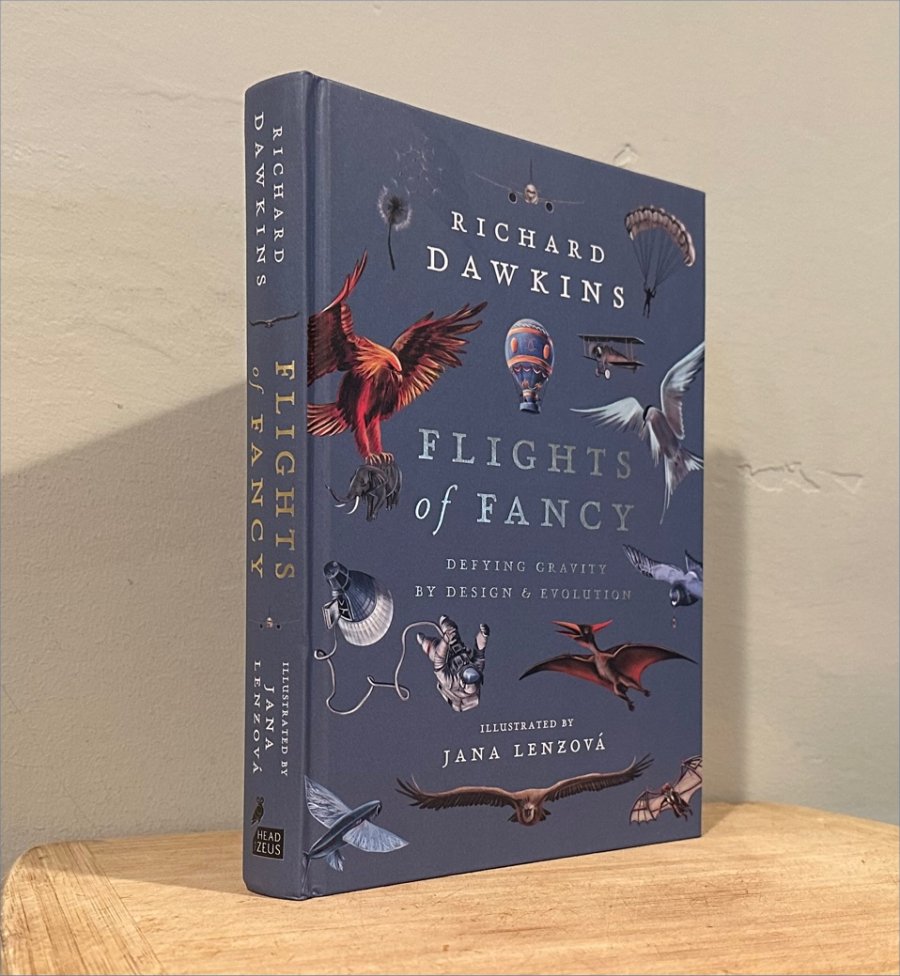This book was released in the UK in November 2021 — here’s its Amazon UK page — and was announced for US release in May 2022. I ordered the latter when it came out; here is its Amazon.com page. Turns out they are not separate editions, but the same identical edition, from the Apollo imprint of Head of Zeus, with a single ISBN, and only the UK price in pounds on the back. Why the delay in US availability? Don’t know.
The books is pleasant but unusual in Dawkins’ oeuvre. Dawkins, arguably the greatest writer on evolution of the past 50 years, has written a number of books on the subject from The Selfish Gene in 1976 (my review) to The Greatest Show on Earth in 2009 (my review), and another dozen or so on adjacent topics, from science to religion to autobiography.
This one is different. It’s a guide to a certain slice of natural history aimed at younger readers, and it’s profusely illustrated, by Slovak illustrator and translator Jana Lenzova. (Sample below.)
Topics include humanity’s dreams of flying; why some animals lose their wings; why smaller animals can more easily fly and how larger animals compensate. It goes on to discuss human inventions of parachutes and gliders; powered flight (airplanes, et al); weightlessness; and how some plants and microbes ‘fly’ by letting air currents propagate their seed.
Unsurprisingly Dawkins does not let opportunities to discuss evolution and natural selection pass him by. A running theme through the book is how things can look designed but have actually evolved; one late chapter focuses on that idea specifically. Another late chapter focuses on the creationist canard “what is the use of half a wing?”, giving copious answers to that naive, bad-faith question.
So why did I read this book? It’s pretty basic and I’m not sure I learned any new principles from it, though throughout Dawkins provides many specific examples of animals and machines that have employ slightly different methods to achieve flight.
Would I recommend it? Sure, as a casual visit with a famous scientist, for a couple of hours. Or especially as a gift to a teenager interested in the natural world, and not too cemented into religious doctrine to be open to understanding naturalistic understanding of how the world has come to be.
The book a science fictional angle that was new me. The final chapter in the book is called “The Outward Urge,” in which Dawkins speculates on reasons humanity might want to, in effect, spread its seeds into outer space, the way dandelions do theirs on the wind. His reasons are familiar, but his title evokes a John Wyndham novel I’ve heard of but have never read, The Outward Urge, from 1959. It’s actually still in print, perhaps in a print-on-demand edition (I can’t tell: Amazon), but in any event is far more obscure than the half-dozen novels for which Wyndham remains known (The Day of the Triffids, The Midwich Cuckoos, et al.).
Dawkins read science fiction growing up, or as a young man, and it influenced him; he mentions examples routinely in his books. Though he hasn’t kept up with anything, it seems, since the 1950s.







